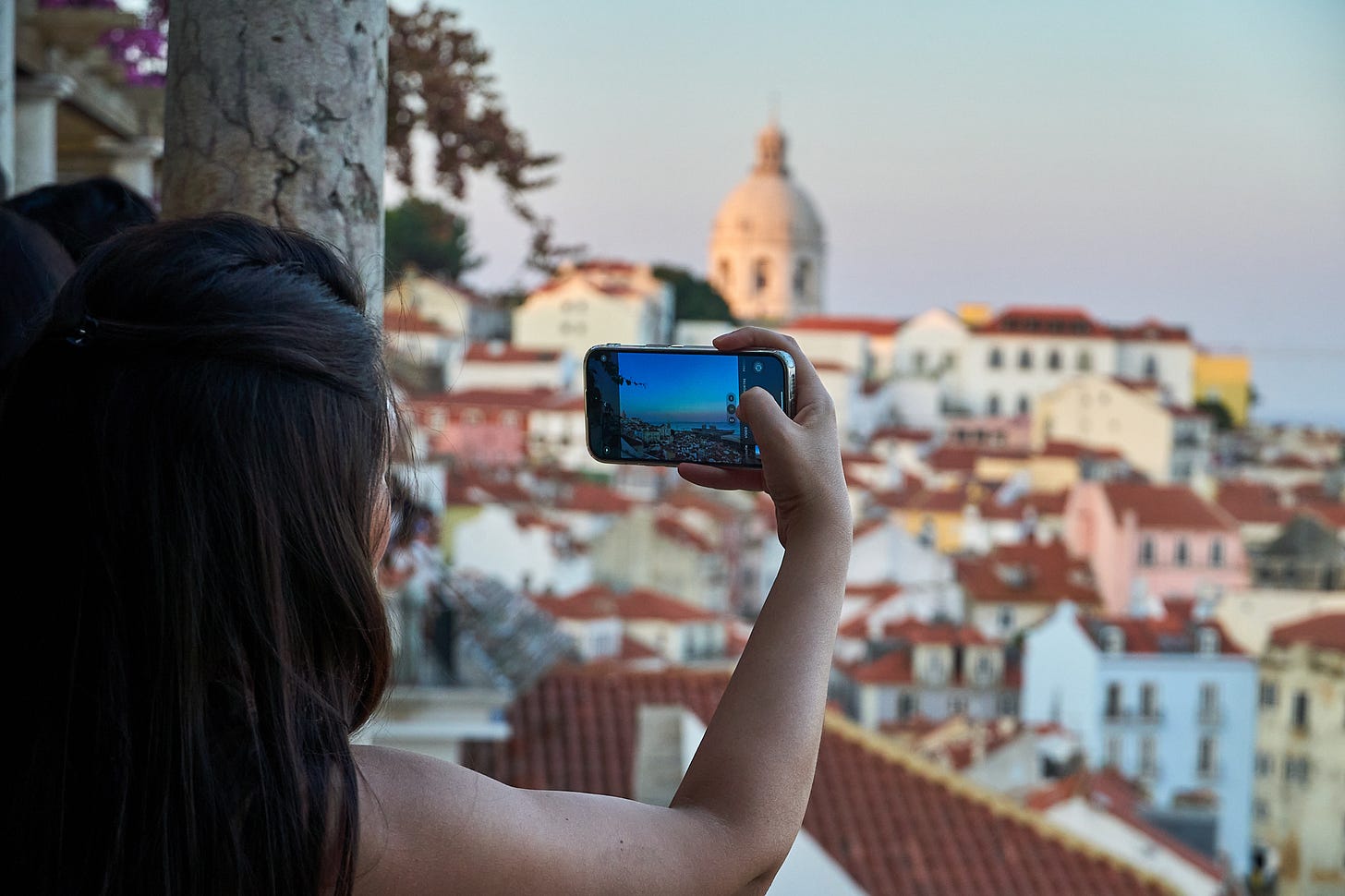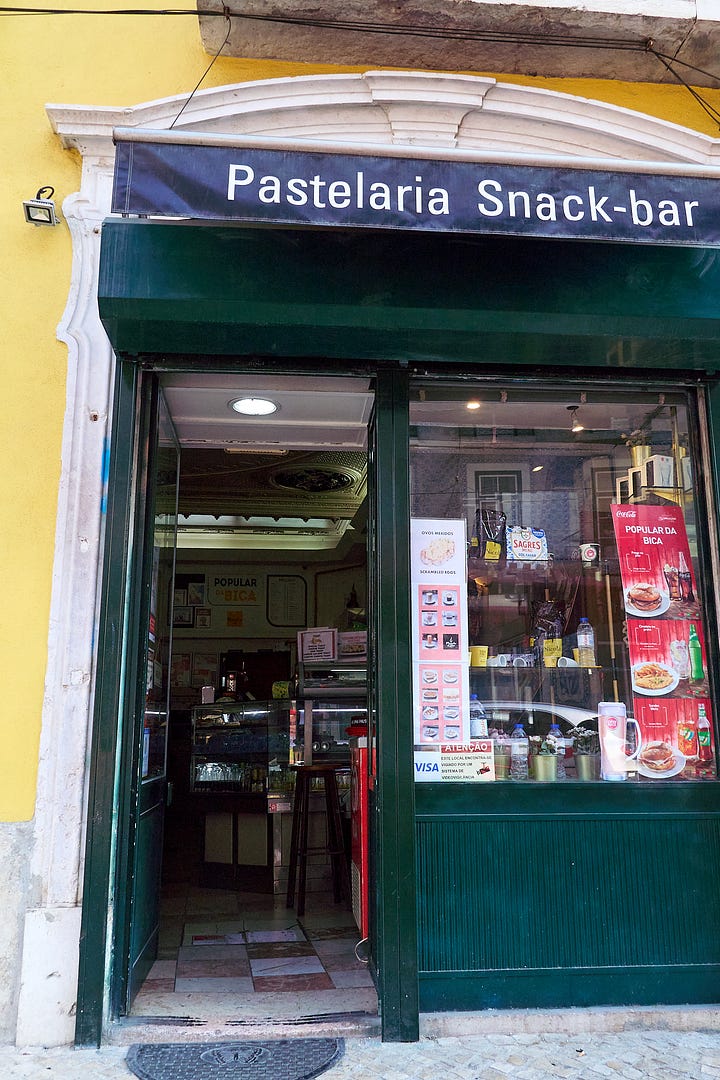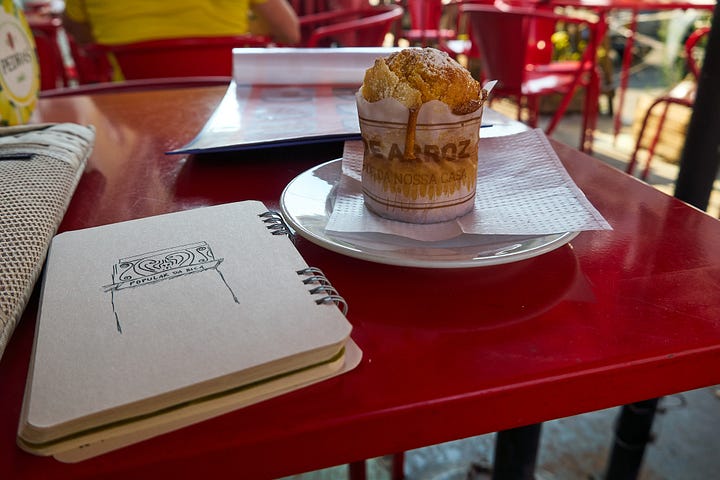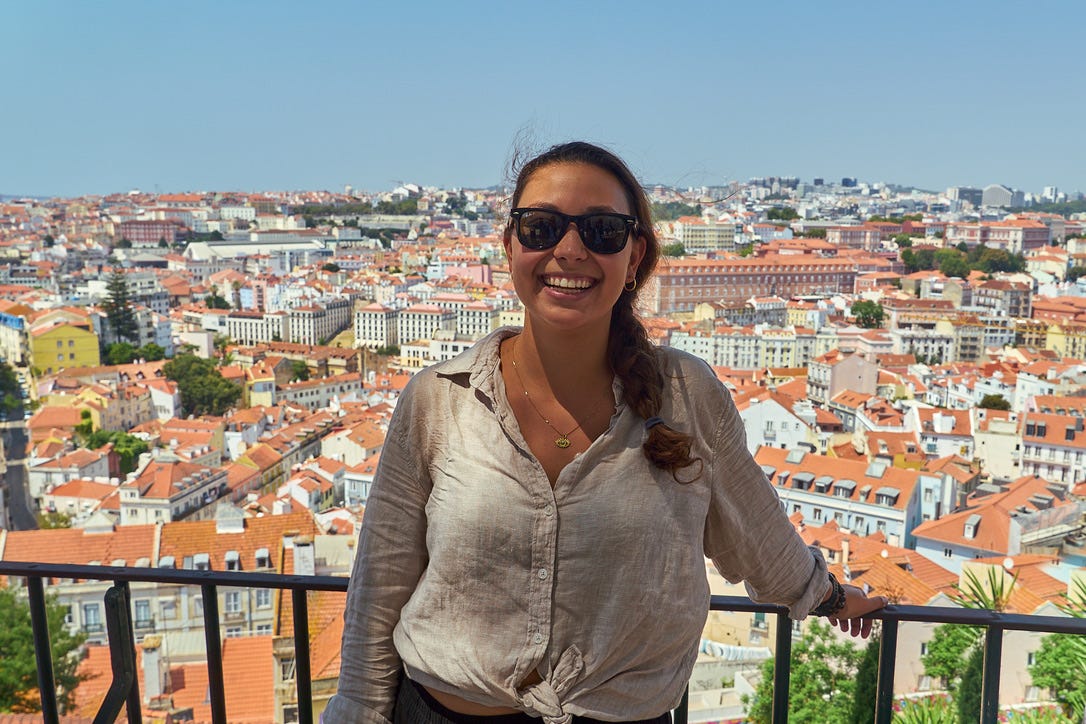A Digital Nomad's Dilema
How do we travel consciously and responsibly

The sun was already sending beads of sweat down my back as I emerged from Cais do Sodre metro station in Lisbon. It was morning commute hour and hundreds of us were hiking up the stairs in unison. It feels good to be part of the morning hustle synchronicities. Not as an onlooker, but a partaker. That’s what I love about living in cities temporarily. Having a limit to leave gives urgency to get to know the place better. But staying here long enough means becoming a regular at cafes and familiarizing yourself with the city, its people, and routines. But what we don’t often think about is the impact both positive and negative us transient humans leave as a fingerprint in the places we visit. This is what I’m exploring today, part of the digital nomad dilemma.
As I wove my way through the hilly streets, the morning light bounced off the mosaic tiles covering the faces of buildings. Pigeons took their morning bath in a little puddle from a fountain. I passed a little hole-in-the-wall place with a black awning and plastic red chairs and tables on the outdoor terrace, and decided this was my spot.
Immediately I was greeted by an older grandfather-like man who smiled and said “Bom dia!” As he cleaned a table for me and pulled the chair out so I could sit down. It’s a traditional place, the kind you can see the time itself hand-carve the wrinkles in the walls and accumulated grim on the floors. The glass counter is filled with dozens of pastries and the espresso machine rattles as it pours out strong shiny thick black espresso.
It’s not “Instagram-worthy”. Sitting here made me realize how much we now pick our eating spots and coffee shops based on how aesthetically appealing they look. First checking online, then evaluating in person. But it’s spot like these that are the real gems. As I sat there, I saw him greet tourists passing by. All of them scanning the place and passing it by probably just because it wasn’t up to photogenic standards.
Another day I was walking with a friend back to their apartment. When we said goodbye, I kept walking down the street and stumbled upon another little traditional cafe called Bemposta, owned by Brazilians. Unassuming, but inside full of heart. Friendliest people, great background music, wifi, strong coffee, Portuguese and Brazilian pastries, and a little terrace in the shade.
In these two spots I mentioned, the servers know the people walking past and greet them by name. They make time to chitchat with you. They greet all of the elderly people shuffling by and all the little babies in their strollers. If their friend shows up at the cafe, the server pulls up a chair next to them and smokes a cigarette and drinks a coffee with them. They are relaxed and treat everyone like family.
As weeks in Lisbon have passed by, I’ve continued observing and asking questions. When we travel to a place, like Lisbon, for instance, why do we gravitate toward those specialty coffee shop places that all serve flat whites, matcha lattes, avocado toasts, and granola bowls… when we can find the same exact things back home… and increasingly in every city. Do we go to them because of aesthetics? Because servers are more likely to speak our language? Because we are comforted by being familiar with the menus? I’m not saying going to these places is bad, I’m just being more conscious of how globalized we are getting and how intentional we are being about authentic traditional experiences when we travel and what we prioritize.
Lisbon seems packed with third-wave specially cafes and coffee shops. They are adorable and cute and friendly. You can order conveniently in English and they have croissants, delicious omelets, pancakes, and lattes. But none of them serve true bica, bolo de arroz, queque laranja, or paõ de queijo… quintessential Portuguese or Portugese-influenced staples.
If those places are all we frequent while in foreign countries, that begs the question: Are we loosing the real reason we travel?
It’s a bit strange to see myself wrestle with these topics. For the most part I often scope out a place’s ratings on Google Maps and check the comments and reviews. I’m usually on the hunt for good local cafes. But this time in these few weeks I think I am changing. For a long time I’ve always been a supporter of the “local” spots. But now I realize it’s more than about “local” and more about authentic and traditional (to that geographic place in the world).
For instance why go to a cafe where we immediately get greeted in English and everyone around us is expat and digital nomad huddled into their computers drinking cold brews and mochas… in Portugal… when instead we can go to the unassuming little bica snack bar, practice Portuguese, and get a coffee for half the price, great conversation with the owner, and observe the locals coming and going.
But being a digital nomad myself, I feel almost bad taking up a table and using their wifi and doing work on my computer. It feels like I’m disturbing their day-to-day atmosphere by bringing my digital nomad lifestyle into their cafe. What to do?
I don’t have an answer. But what I find important is thinking about these things, because we are seeing cities change so much because of it. Traditional spots disappearing to make way for specialty cafes catering to tourists and immigrants that locals can’t afford. Cafes that once were places of socialization, idea exchange, mingling, thinking, smoking, reading… turning into offices for those with laptops. Where servers don’t know people by name anymore because the street is all hotels and Airbnb’s.
When I expressed this dilemma to my mentor, Ron, he reminded me that a city like Lisbon is very international. Something else we can do is look for places that are fusions of Portugal. For instance Angolan cuisine or Mozambique cuisine in Lisbon because they were former Portuguese colonies, so the food we’d find here from those places would also be very good and we are likely to meet interesting people there.


As I write this, I’m at Bemposta. The owner is smoking a cigarette and sat down next to a customer to talk. I’ve turned into the unofficial greeter because every time someone arrives, I say “Bom dia” and feel part of their little neighborhood cafe. I’ve come here enough times to now recognize the little babies that pass by with their parents, the elderly people who shuffle up the street, and even the dogs of the neighborhood. There’s something special about feeling like you are part of a community, even while you are a temporary guest.
Later in the day I went over to Baixa and went into an EspressoLab because I knew they’d have wifi, bathrooms, AC, and I could do some work on my computer. But still I was able to make a connection with the server who turns out was from Venezuela and we had a nice conversation. By the time I was leaving, he was also getting off shift and he ended up walking me to the metro station and showing me which train to take.
All extremes are difficult. But at least if we are more conscious of how we travel and interact with the places we visit, we can begin to make better choices. Not just for ourselves, but to the communities where we visit.





Hi Maria! I’m a portuguese journalist and I’m preparing an article about digital nomads living in the city. I found your article very interesting and would like to interview you. Could you please give me your contact information so we can schedule a conversation? My email is jbastos@expresso.impresa.pt. Thanks! Joana Pereira Bastos